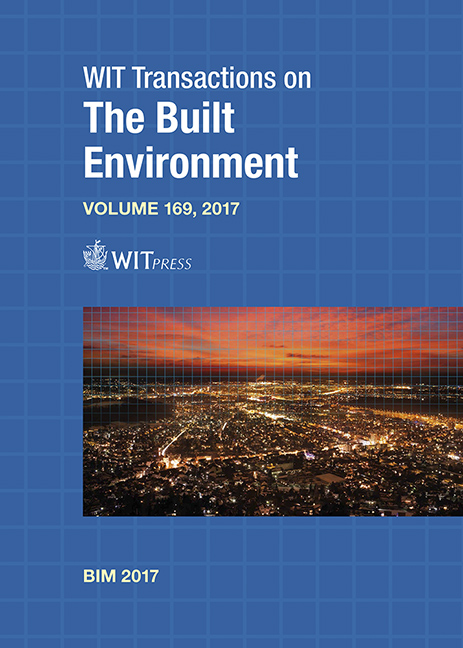METHODOLOGICAL DISCUSSION OF INSERTION AND EXPORTATION OF LCA DATA EMBEDDED IN BIM ELEMENTS
Price
Free (open access)
Transaction
Volume
169
Pages
10
Page Range
101 - 110
Published
2017
Size
410 kb
Paper DOI
10.2495/BIM170101
Copyright
WIT Press
Author(s)
CRISTIANE BUENO, MÁRCIO MINTO FABRICIO
Abstract
The Life Cycle Assessment (LCA) methodology can be used to quantify, in the design phase, the impacts of a product throughout its life cycle and to determine which building components have the highest potential impacts. However, such a method has often been avoided due to the need for detailed input data and the complexity of the available tools. For that reason, although LCA is increasingly present in the construction sector demands, professionals continuously pursue new ways to incorporate such methodology to the building design and construction processes, as simple and uncomplicated as possible. A promising possibility is the incorporation of building systems LCA data in the BIM software tools. Numerous limitations of BIM-based LCA have been identified over the years. For instance, the complexity of LCA software tools, particularly as regards the data input and interpretation of results, and the interoperability issues, all need to be overcome. Once BIM models are composed of smart objects, which represent construction elements with encapsulated intelligence, they are expected to be where LCA data could be applied. In this paper a conceptual and methodological discussion will be developed on the practical possibilities of inclusion and export of LCA data embedded in BIM elements, focusing on Autodesk Revit software and its features. Such a discussion will take place by exploiting technological possibilities of such software and evaluating the possibilities of development and modification of parametric elements and families, as well as the further export potential of such embedded LCA information. The main goal is the construction of a robust theoretical framework that will precede the future development of a methodological BIM-LCA integration tool by the exploitation of the features available in the existing software.
Keywords
environmental assessment of buildings, life cycle assessment, building information modelling, BIM-LCA integration tools, functional unit





